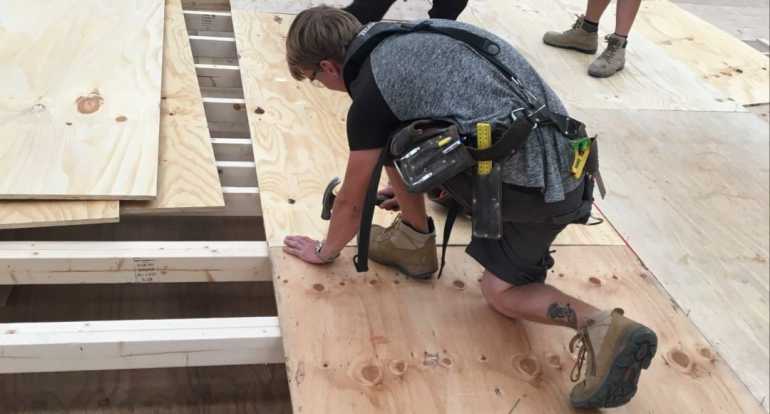It typically comes in 4 x 8 foot sheets.
How many screws per sheet of plywood underlayment.
You ll want the screw to go about an inch past the plywood into the joist or underlying layer beneath it.
Divide by the total square footage by the square footage of a sheet of plywood to find the number of sheets required to cover the space.
Am i on the right track.
I ve done a few 4x8 planks with screws at that frequency.
Most plywood underlayment is about 1 4 inch thick and has square edges and a smooth knot free top face.
800 32 25 sheets.
4 feet equals 48 inches which you then divide by 8 to determine that you ll need six nails where the board comes in contact with a truss.
Types of plywood underlayment.
A 4 8 sheet of plywood is 32 ft 2.
Drive the screws in so that the heads are slightly below the surface of the backerboard sheet.
If the plywood subfloor you re placing is 5 8 of an inch thick you need a screw about 1 5 8 inches long.
For many years the standard option was lauan plywood also called philippine mahogany or luan plywood which is made with an inexpensive tropical hardwood and therein.
This means that you ll need to use six nails per each truss that runs under the sheathing because each sheet measures 4 feet wide by 8 feet long.
Position the screws at least 1 2 inch but no more than 2 inches from the edge of the sheet.
So if your subfloor is 3 4 of an inch thick any screw about 1 3 4 inches long will do the trick.
The floor looks like the skin of an airplane with so many screws around the perimeter.
Drill screws through the backerboard sheets every 6 to 8 inches.
Man that s a lot of screws.
39 screws a sheath floor opening if there is an opening in your floor enter the sq footage in the floor opening field.
For example if the area to be covered in plywood is 800 ft 2 then 25 sheets of plywood will be needed to cover it.
I ve read for nailing the underlayment to do one nail every foot in the interior of the plywood and around the perimeter at 2.

